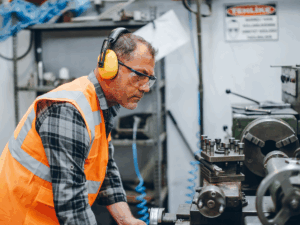March 18, 2025
In recent years, Australia has faced more frequent and intense natural disasters, including severe floods, bushfires and extreme weather events. These disasters have devastated communities, strained infrastructure, and exposed gaps in disaster response frameworks. The 2022 floods in eastern Australia, one of the country’s worst recorded disasters, emphasised the urgent need for a more proactive and customer-centric approach to disaster recovery. The October 2024 release of the parliamentary flood inquiry report, Flood Failure to Future Fairness, has provided a crucial roadmap for addressing these challenges — calling on governments, insurers and other stakeholders to prioritise community needs in disaster response efforts.
Learning from past challenges
The findings of the parliamentary flood inquiry highlight several systemic issues that have hampered the effectiveness of disaster response in the past. These include delays in claims processing, lack of transparent communication, insufficient preparedness and inconsistencies in support for affected communities.
Queensland and northern New South Wales (NSW) have been hit by severe La Niña-driven flooding, and entire regions have been experiencing prolonged inundation from the recent ex-Tropical Cyclone Alfred. During these events, many residents reported feeling abandoned or underserved during critical moments, reflecting a significant disconnect between service providers and those in need. Addressing these gaps requires a paradigm shift, with a stronger emphasis on fairness, accountability and customer-centric solutions that prioritise the needs and wellbeing of affected individuals.
Disaster response focused on the customer
A customer-centric approach to disaster response means placing impacted individuals and communities at the heart of decision-making processes. It involves not only providing immediate assistance, but also fostering trust, empathy and collaboration throughout the recovery journey. Key elements of this approach include:
- Proactively engaging with stakeholders: Effective disaster management begins with open communication between insurers, government agencies and affected communities. Engaging stakeholders early allows for the identification of specific needs and expectations, paving the way for tailored solutions. Regular updates and transparency about processes can alleviate frustration and foster trust.
- Streamlining claims processing: One of the most common pain points during disaster recovery is delays in claims handling. Adopting technology-driven solutions, such as digital claims platforms and real-time assessment tools, can significantly reduce processing times. Moreover, simplifying claims procedures ensures that individuals and businesses can access support without unnecessary bureaucracy.
- Prioritising fairness and inclusivity: Recovery efforts must account for the diverse needs of individuals, including vulnerable populations such as the elderly, people with disabilities and those in remote areas. Equitable access to resources and services is essential to ensuring no one is left behind in the aftermath of a disaster.
- Building long-term resilience: Beyond immediate recovery, fostering resilience against future events is critical. This includes educating communities on preparedness, investing in infrastructure improvements, and promoting climate adaptation strategies. Collaborative efforts between stakeholders can create a more robust framework for managing future challenges.
Driving industry change
The parliamentary flood inquiry has been a catalyst for rethinking disaster response across the industry. Its recommendations emphasise the need for structural changes, improved accountability and a renewed focus on the customer experience. These changes require collaboration between government bodies, insurers, loss adjusters and other service providers. By working together, we can transform lessons learned from past failures into actionable strategies that benefit both individuals and communities.
Sedgwick has taken proactive steps to align our practices with the recommendations of the parliamentary flood inquiry. These efforts reflect a deep commitment to supporting insurers, policyholders and communities affected by disasters.
1. Forging connections
We’ve introduced a comprehensive client engagement plan designed to foster stronger relationships with clients and stakeholders. This plan emphasises open communication, collaboration and delivering tailored solutions to meet each client’s unique needs. By actively engaging with all parties involved, we aim to bridge gaps in understanding and enhance the overall customer experience.
2. Implementing inquiry recommendations
Our operations team has thoroughly reviewed the recommendations of the Flood Failure to Future Fairness report, prioritising key areas for improvement. These include refining internal processes, enhancing transparency, and adopting innovative practices to better support our clients. By acting on these recommendations, we’re demonstrating our commitment to driving meaningful industry change.
3. Monitoring and supporting insurer needs
We’re also focusing on the evolving landscape of disaster management, including the terms of reference for the parliamentary inquiry. This vigilance ensures readiness to adapt to new challenges and provide timely, relevant support to insurers. By staying ahead and keeping informed with emerging trends and issues, we can continue delivering solutions that align with the needs of our clients and their customers.
Looking ahead
The release of the parliamentary flood inquiry report marks a pivotal moment for disaster response in Australia. It’s a call to action for all stakeholders to prioritise fairness, transparency and customer-centric solutions in addressing the challenges posed by natural disasters.
Sedgwick’s proactive initiatives serve as a testament to the importance of aligning industry practices with these principles. By fostering engagement, implementing improvements, and remaining responsive to evolving needs, we’re helping to shape a more resilient future for communities affected by climate events. This commitment underscores the broader imperative for organisations to embrace innovation, empathy and collaboration in times of crisis.
The ultimate goal is clear: ensuring individuals and communities affected by disasters receive the support they need to rebuild their lives with dignity and confidence, even in the face of increasing climate challenges.
> Learn more — explore our catastrophe response solutions for the Australia market



